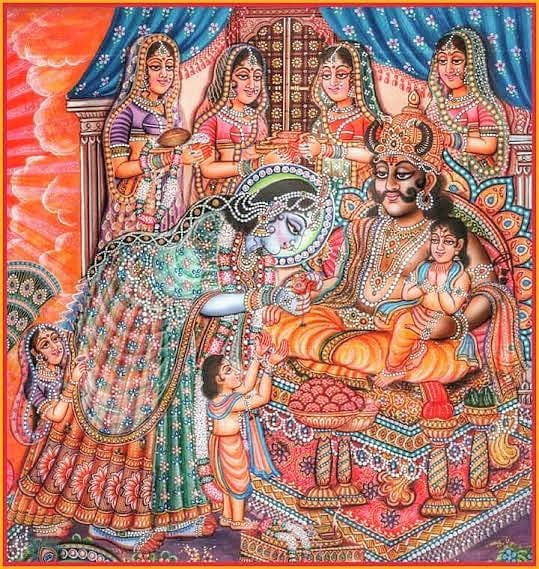India’s festival of lights-Diwali/Deepawali commences this week with all its glitter, sparkles & glory. What fascinates me is the legends associated with it across the Country—each diverse & interesting.
Day 1 : Dhanteras
Dhanvantari is worshipped on the occasion of Dhanteras, is considered the God of Ayurveda who imparted the wisdom of Ayurveda for the betterment of mankind, and to help eliminate the suffering of disease.
Since 2016, the Indian ministry of Ayurveda, Yoga , Naturopathy, Unani, Siddha & Homeopathy, observes Dhanteras, as the “National Ayurveda Day”
Dhanteras is the worship of Dhanvantari, according to mythology, emerged during Samudra Manthan, holding a Kalasha full of Amrit in one hand & the sacred text about Ayurveda in the other hand. He is considered to be the Vaidya of Gods. In some parts of India even Goddess Annapurna is also worshipped on Dhanteras.
Day 2 : Naraka Chaturdashi
Naraka Chaturdashi also known as Chhoti Diwali, is the second day of festivities coinciding with the fourteenth day of the second fortnight of the lunar month. The term “chhoti” means little, while “Naraka” means hell & “Chaturdashi” means “fourteenth”. The day & its rituals are interpreted as ways to liberate any souls from their suffering in “Naraka”(or hell), as well as a reminder of spiritual auspiciousness. A mythological interpretation of this festive day is the destruction of the asura (demon) Narakasura by Krishna, a victory that frees 16,000 imprisoned princesses kidnapped by Narakasura. It coincides with the day of Kali Chaudas. It is believed that spirits roam around on the night of Kali Chaudas & Hanuman, who is the deity of strength, power, and protection, is worshipped to seek protection from the spirits.
Day 3: Amavasya Laxmi Puja
On the night of Diwali, rituals across India are dedicated to Lakshmi to welcome her into their cleaned homes , bring prosperity & happiness for the coming year. This is the BIG DAY among this 5-day Festival where great food, good clothes & crackers are the usual trademark across India & Indians abroad to celebrate.
Its believed that Goddess Lakshmi comes across visiting houses sitting on her Vahana-Owl & to welcome her on the New Moon Day (Amavasya) we clean, decorate & light up with diyas to please her & bless us with health & prosperity. This is also the day when Lord Rama & Sita along with Lakshamana returned to Ayodhya after their fourteen years exile after killing the Lord of Lanka –Ravana who had who had kidnapped Sita. Rama was helped by Hanuman & his Vanara Sena to conquer on Ravana & his army of Demons.
Day 4: Bali Padyami/ Annakut/ Govardhan Puja
Annakut is celebrated on the fourth day of Diwali. Therefore, the rituals surrounding Annakut are closely linked with the rituals of the five days of Diwali. While the first three days of Diwali are days of prayer to sanctify wealth & invite greater wealth into the devotee’s life, the Annakut day is a day of offering gratitude for Krishna beneficence.
The day is also associated with the story of Bali’s defeat at the hands of Vishnu(As Vamana Avatar) .It is celebrated in honour of the notional return of the daitya-king Bali to earth.
Day 5: Bhai Dooj/Yama Dwitiya
The last day of the festival is called Bhai Dooj. It celebrates the sister-brother bond, similar in spirit to Raksha Bandhan but it is the brother that travels to meet the sister & her family. This festive day is interpreted by some to symbolize Yama’s sister Yamuna welcoming Yama with a tilak, while others interpret it as the arrival of Krishna at his sister’s, Subhadra, place after defeating Narakasura. Subhadra welcomes him with a tilak on his forehead.
















